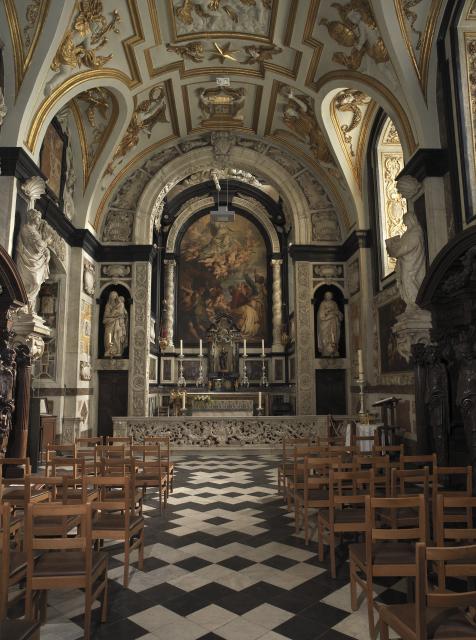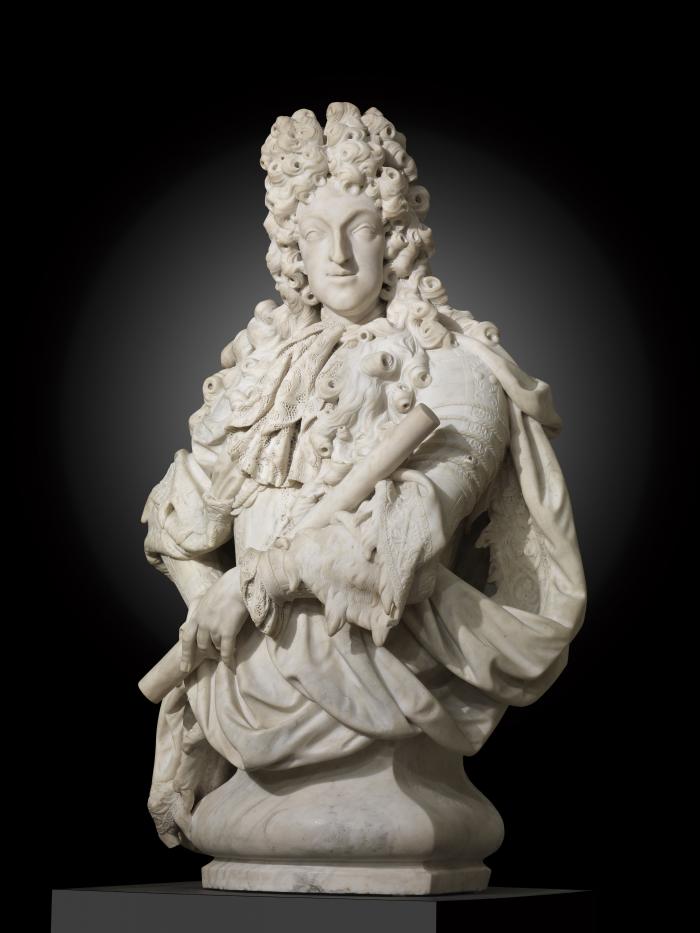


During the period of the Baroque, the art of sculpture was much more closely connected with religion and its experience than was painting. The reason for this is that sculpture had a tight connection with the Church building and especially with its decoration.
In the 16th Century, during the religious debates, the physical depiction of the Saints was a contested theme. Not only the painted, but especially the sculptured, presentation of the Saints was denounced by the Protestants. Sculptures reminded them of the pagan idols, which stood as a symbol for idolatry.
Thus also in the church interior, the sculptured works were the victim par excellence of the Iconoclasm of 1566. This fact, along with the purging during the periods of the Calvinist reign in our regions, ensured that in 1585, the churches from the Spanish occupation in our region were a desolate sight and needed to be refurbished. Herein the sculptured works of art would then occupy a central place as an essential part of the stone and wooden church furnishings.
The Council of Trent (1545-63), the Roman Catholic answer to the Reformation, placed a number of emphases in the religious doctrine, which brought to light the new church furnishings, such as the Confessional. Not only these new furnishings, but also other elements of the church décor were provided with a sculptural decoration with presentations that were associated with the function of the furniture, illustrating essential points of faith or depicting patron Saints. Altars, pulpits, Communion benches, baptismals, stools, organs and monuments were rendered in forms that illustrated the Catholic principles for the faithful in a graphic manner. Throughout the 17th and the 18th Centuries, this sculptural decoration took on an increasingly opulent and monumental character. The art of sculpture also entered into a dialog with other media such as architecture and painting, a phenomenon that is typical for the Baroque.
Just as was the case with painting, Antwerp was also the leading artistic centre for sculpture in the Southern Low Countries. Important to this was the fact that the sculptors who worked in stone and those who were previously members of the Mason and Sculpture Guild, also had to enter the Guild of Saint Luke beginning in 1606. Thus they were elevated more to the level of the painters, which had an important influence on the artistic quality of their work.
Large sculpture studios, of which the Masters were often related or had begun schooling together, came into being. Artist families such as Jan and Robrecht Colyn de Nole, Jan and Cornelis van Mildert, Hubert and Norbert Van den Eynde, Peter I, Peter II and Hendrik Frans Verbruggen, Artus I and Artus II Quellinus, Willem and Willem Ignatius Kerricx and Ludovicus Willemssens worked throughout the whole of the Southern Low Countries. Even abroad some of them made a name. As such, Artus Quellinus I (1609-1668) occupied an important place in the art of sculpture in the Northern Low Countries.
In addition to Antwerp, Mechelen needs to be mentioned as an important city of production for Baroque sculpture. Lucas Faydherbe (1617-1697), student of Peter Paul Rubens, came from a Mechelen sculpture dynasty. However, it is primarily in the 18th Century that Mechelen will further the élan of the Baroque sculpture with sculptors such as Theodor Verhaeghen (1700-1759).
The most internationally successful artist, however, came from the region of Brussels. François du Quesnoy (1597-1643) sought and found a fortune in Italy, where along with Gianlorenzo Bernini, he would become the most important exponent of the Italian Baroque sculpture.
In addition to these monumental forms of sculpture, the Southern Low Countries also excelled in small-scale sculpture executed in Ivory and durable woods such as Boxwood. Here too the religious art played an important role with the presentation of the Crucified Christ and the Virgin Mary. However, profane themes such as mythological scenes also found their expression in these very expensive media. These expensive gems not only received a place in the church, but also in the bourgeois interior.
In this period, the Southern Low Country profane sculpture had still two other disciplines in which they excelled. On the one hand, the genre of the portrait bust took off, such as a number of examples from the collection of the KMSKA attest. On the other hand, garden sculpture, primarily in the 18th Century, also experienced a boom.
Valerie Herremans
CC BY (Creative Commons 4.0)